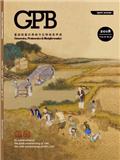
基因组蛋白质组与生物信息学报(英文版)(Genomics,Proteomics & Bioinformatics) 知网目次维普目次
- CSCD
- 科核
- 主管单位:
中国科学院
- 主办单位:
中国科学院北京基因组研究所(国家生物信息中心)、中国遗传学会
- 国际刊号:
1672-0229;EISSN2210-3244
- 国内刊号:
11-4926/Q
- 学科分类:
- 字数:
6000-38000
- 有无基金:
/有基金 100.0%
- 周期:
CN外文-双月刊
- 特殊属性:
第一批认定学术期刊,外文期刊
- 电话:
010-84097425(202304期)
- 邮箱:
editor@big.ac.cn(202304期)
- 复合因子:
1.125
- 综合因子:
0.696
- 收录:
知网目次,维普目次
- 级别:
CSCD,科核
期刊简介
《基因组蛋白质组与生物信息学报》期刊已被查看: 次
更新频次
单位占比
一作占比
/有基金-100.0%投稿指南
1、投稿方式:在线投稿。
2、官网网址:http://gpb.big.ac.cn/
https://www.sciencedirect.com/journal/genomics-proteomics-and-bioinformatics
3、投稿系统:https://www.editorialmanager.com/gpb
4、刊内邮箱:editor@big.ac.cn
5、出刊日期:双月刊,逢双月出版。
2024年4月15日星期一
《基因组蛋白质组与生物信息学报(英文版)》投稿须知
【官网信息】
Guide for Authors
Your Paper Your Way
We now differentiate between the requirements for new and revised submissions. You may choose to submit your manuscript as a single Word or PDF file to be used in the refereeing process. Only when your paper is at the revision stage, will you be requested to put your paper in to a 'correct format' for acceptance and provide the items required for the publication of your article.
To find out more, please visit the Preparation section below.
Introduction
Genomics, Proteomics & Bioinformatics publishes papers from all over the world in the fields of genomics, proteomics and bioinformatics. The Journal aims to achieve fast science broadcasting by publishing efficiently. GPB offers Article-in-Press, by which all the accepted manuscripts can be freely accessible online ahead of its printed issue print for fast dissemination. Featured areas and particular interests of GPB include but are not limited to:
•Genomics: functional genomics, evolutionary genomics, comparative genomics, epigenetics, transcriptomics
•Proteomics: protein expression profiling, protein complexes in terms of structure, function, properties and interactions, metabolomics
•Bioinformatics: genome analysis, sequence analysis, genetic and population analysis, phylogenetics, gene expression, database, web server, algorithm, tools and software, with emphasis on large-scale data analysis based on high-throughput sequencing technologies
GPB welcomes submissions from all over the world in the following types:
•High-quality research papers presenting novel data and ideas •Papers describing innovative methods, tools and techniques as well as resources providing primary scientific information to a broad readership •Comprehensive reviews either as full articles or mini-reviews related with author's own research •Commentaries and opinions about new discoveries, scientific policies, and research proposals
Sections:
•Editorials •Essays •Commentaries •Reviews •Research Articles •Letters •Methods •Application Notes •Research Resources
Submission checklist
You can use this list to carry out a final check of your submission before you send it to the journal for review. Please check the relevant section in this Guide for Authors for more details.
Ensure that the following items are present:
One author has been designated as the corresponding author with contact details:
• E-mail address
• Full postal address
All necessary files have been uploaded:
Manuscript:
• Include keywords
• All figures (include relevant captions)
• All tables (including titles, description, footnotes)
• Ensure all figure and table citations in the text match the files provided
• Indicate clearly if color should be used for any figures in print
Graphical Abstracts / Highlights files (where applicable)
Supplemental files (where applicable)
Further considerations
• Manuscript has been 'spell checked' and 'grammar checked'
• All references mentioned in the Reference List are cited in the text, and vice versa
• Permission has been obtained for use of copyrighted material from other sources (including the Internet)
• A competing interests statement is provided, even if the authors have no competing interests to declare
• Journal policies detailed in this guide have been reviewed
• Referee suggestions and contact details provided, based on journal requirements
Ethics in publishing
Please see our information pages on Ethics in publishing and Ethical guidelines for journal publication.
CONFLICTS OF INTEREST
A declaration of Conflict of Interest section must be included in the manuscript. A conflict of interest occurs when an individual’s objectivity is potentially compromised by a desire for financial gain, prominence, professional advancement or a successful outcome. GPB Editors strive to ensure that what is published in the Journal is as balanced, objective and evidence-based as possible. Since it can be difficult to distinguish between an actual conflict of interest and a perceived conflict of interest, by declaring no conflict of interest, the Journal requires authors to disclose all and any potential conflicts of interest including:
Section I
The authors certify that they have NO affiliations with or involvement in any organization or entity with any financial interest (such as honoraria; educational grants; participation in speakers’ bureaus; membership, employment, consultancies, stock ownership, or other equity interest; and expert testimony or patent-licensing arrangements), or non-financial interest (such as personal or professional relationships, affiliations, knowledge or beliefs) in the subject matter or materials discussed in this manuscript.
Section II
The authors report the following details of affiliation or involvement in an organization or entity with a financial or non-financial interest in the subject matter or materials discussed in the manuscript. Please specify the nature of the conflict on a separate sheet of paper.
By submitting to GPB
By submitting to GPB, the corresponding author certified that all Authors have seen and approved the manuscript being submitted. Authors warrant that the article is the Authors' original work. Authors warrant that the article has not received prior publication and is not under consideration for publication elsewhere. On behalf of all Co-Authors, the corresponding Author shall bear full responsibility for the submission. Authors attest to the fact that all Authors listed on the title page have contributed significantly to the work, have read the manuscript, attest to the validity and legitimacy of the data and its interpretation, and agree to its submission to Genomics, Proteomics & Bioinformatics (GPB). All authors agree that author list is correct in its content and order and that no modification to the author list can be made without the written acceptance of all authors and the formal approval of the Editor-in-Chief. All authors accept that the Editor-in-Chief's decisions over acceptance or rejection or in the event of any breach of the Principles of Ethical Publishing in Genomics, Proteomics & Bioinformatics (GPB) being discovered, of retraction are final.
Submission declaration and verification
Submission of an article implies that the work described has not been published previously (except in the form of an abstract, a published lecture or academic thesis, see 'Multiple, redundant or concurrent publication' for more information), that it is not under consideration for publication elsewhere, that its publication is approved by all authors and tacitly or explicitly by the responsible authorities where the work was carried out, and that, if accepted, it will not be published elsewhere in the same form, in English or in any other language, including electronically without the written consent of the copyright-holder. To verify originality, your article may be checked by the originality detection service Crossref Similarity Check.
Use of inclusive language
Inclusive language acknowledges diversity, conveys respect to all people, is sensitive to differences, and promotes equal opportunities. Content should make no assumptions about the beliefs or commitments of any reader; contain nothing which might imply that one individual is superior to another on the grounds of age, gender, race, ethnicity, culture, sexual orientation, disability or health condition; and use inclusive language throughout. Authors should ensure that writing is free from bias, stereotypes, slang, reference to dominant culture and/or cultural assumptions. We advise to seek gender neutrality by using plural nouns ("clinicians, patients/clients") as default/wherever possible to avoid using "he, she," or "he/she." We recommend avoiding the use of descriptors that refer to personal attributes such as age, gender, race, ethnicity, culture, sexual orientation, disability or health condition unless they are relevant and valid. These guidelines are meant as a point of reference to help identify appropriate language but are by no means exhaustive or definitive.
Author contributions
For transparency, we encourage authors to submit an author statement file outlining their individual contributions to the paper using the relevant CRediT roles: Conceptualization; Data curation; Formal analysis; Funding acquisition; Investigation; Methodology; Project administration; Resources; Software; Supervision; Validation; Visualization; Roles/Writing - original draft; Writing - review & editing. Authorship statements should be formatted with the names of authors first and CRediT role(s) following. More details and an example
Authorship Policy
All persons who meet authorship criteria are listed as authors, and all authors certify that they have participated sufficiently in the work to take public responsibility for the content, including participation in the concept, design, analysis, writing, or revision of the manuscript. Furthermore, each author certifies that this material or similar material has not been and will not be submitted to or published in any other publication. The manuscript must include the Author Contribution section, which includes the specific contributions made by each author (list the authors’ initials and contributions). The name of each author must appear at least once in each of the three categories below.
Category 1
Conception and design of study; acquisition of data;analysis and/or interpretation of data.
Category 2
Drafting the manuscript;revising the manuscript critically for important intellectual content.
Category 3
Approval of the version of the manuscript to be published (the names of all authors must be listed).
Changes to Authorship Policy
This policy concerns the addition, deletion, or rearrangement of author names in the authorship of all submitted manuscripts:
Before the manuscript is accepted by journal editor: Requests to add or remove an author, or to rearrange the author names, must be sent to the Journal Editor from the corresponding author of the submitted manuscript and must include: (a) the reason the name should be added or removed, or the author names rearranged and (b) written confirmation (e-mail, fax, letter) from all authors that they agree with the addition, removal or rearrangement. In the case of addition or removal of authors, this includes confirmation from the author being added or removed. Requests that are not sent by the corresponding author will be forwarded by the Journal Editor to the corresponding author, who must follow the procedure as described above. Note that: Further process of the manuscript will be halted until authorship has been agreed.
Before the accepted manuscript is published in an online issue: Requests to add or remove an author, or to rearrange the author names, must be sent to the Journal Manager from the corresponding author of the accepted manuscript and must include: (a) the reason the name should be added or removed, or the author names rearranged and (b) written confirmation (e-mail, fax, letter) from all authors that they agree with the addition, removal or rearrangement. In the case of addition or removal of authors, this includes confirmation from the author being added or removed. Please click to download and fill the Authorship Agreement (https://www.elsevier.com/__data/promis_misc/Authorship Agreement.docx) with all necessary signatures if any changes made on authorship. Requests that are not sent by the corresponding author will be forwarded by the Journal Manager to the corresponding author, who must follow the procedure as described above. Note that: (1) Journal Managers will inform the Journal Editors of any such requests and (2) publication of the accepted manuscript in an online issue is suspended until authorship has been agreed.
After the accepted manuscript is published in an online issue: Any requests to add, delete, or rearrange author names in an article published in an online issue will follow the same policies as noted above and result in a corrigendum.
Elsevier supports responsible sharing
Find out how you can share your research published in Elsevier journals.
Role of the funding source
You are requested to identify who provided financial support for the conduct of the research and/or preparation of the article and to briefly describe the role of the sponsor(s), if any, in study design; in the collection, analysis and interpretation of data; in the writing of the report; and in the decision to submit the article for publication. If the funding source(s) had no such involvement then this should be stated.
Open access
Please visit our Open Access page for more information.
Elsevier Researcher Academy
Researcher Academy is a free e-learning platform designed to support early and mid-career researchers throughout their research journey. The "Learn" environment at Researcher Academy offers several interactive modules, webinars, downloadable guides and resources to guide you through the process of writing for research and going through peer review. Feel free to use these free resources to improve your submission and navigate the publication process with ease.
Language (usage and editing services)
Please write your text in good English (American or British usage is accepted, but not a mixture of these). Authors who feel their English language manuscript may require editing to eliminate possible grammatical or spelling errors and to conform to correct scientific English may wish to use the English Language Editing service available from Elsevier's WebShop. To receive a 10% discount on this service, please use the following code: GPB2003.
Submission
Our online submission system guides you stepwise through the process of entering your article details and uploading your files. The system converts your article files to a single PDF file used in the peer-review process. Editable files (e.g., Word, LaTeX) are required to typeset your article for final publication. All correspondence, including notification of the Editor's decision and requests for revision, is sent by e-mail.
Submit your article
Please submit your article via https://www.editorialmanager.com/gpb/default.aspx.
Peer review
This journal operates a single anonymized review process. All contributions will be initially assessed by the editor for suitability for the journal. Papers deemed suitable are then typically sent to a minimum of two independent expert reviewers to assess the scientific quality of the paper. The Editor is responsible for the final decision regarding acceptance or rejection of articles. The Editor's decision is final. Editors are not involved in decisions about papers which they have written themselves or have been written by family members or colleagues or which relate to products or services in which the editor has an interest. Any such submission is subject to all of the journal's usual procedures, with peer review handled independently of the relevant editor and their research groups. More information on types of peer review.
Article Structure
General manuscript format: Manuscripts must be written in English. Manuscript sections should be presented in the following order: title page, Abstract (less than 200 words), Introduction, Results, Discussion, Conclusions (optional), Materials and methods, Authors' contributions, Competing interests, Acknowledgments, References, followed by Figure legends and Supplementary materials (if any). Please provide each table and figure separately. A manuscript template for research articles is available.
Research paper
Identification of A Novel SBF2 Frameshift Mutation in Charcot-Marie-Tooth Disease Type 4B2 Using Whole-exome Sequencing
Structure samples for other article types:
Minireview
Systems Approaches to Biology and Disease Enable Translational Systems Medicine
Research review
Web Resources for Stem Cell Research
Letter
Complete Sequence of pABTJ2, A Plasmid from Acinetobacter baumannii MDR-TJ, Carrying Many Phage-like Elements
Method article
FunMod: A Cytoscape Plugin for Identifying Functional Modules in Undirected Protein-Protein Networks
Technical note
nuMap: A Web Platform for Accurate Prediction of Nucleosome Positioning
Protocol
Systematic Characterization of Cell Cycle Phase-dependent Protein Dynamics and Pathway Activities by High-content Microscopy-assisted Cell Cycle Phenotyping
Introduction
State the objectives of the work and provide an adequate background, avoiding a detailed literature survey or a summary of the results.
Results
Results should be clear and concise.
Discussion
This should explore the significance of the results of the work, not repeat them. A combined Results and Discussion section is often appropriate. Avoid extensive citations and discussion of published literature.
Conclusions
The main conclusions of the study may be presented in a short Conclusions section, which may stand a
Essential Title Page Information
A title page should include: the title, all authors' names and complete affiliations, the corresponding author's complete contact information, a running title (50 characters or less, including spaces), 2-6 key words, and sources of grants or funding supports and personal acknowledgments).
Highlights
Highlights are optional yet highly encouraged for this journal, as they increase the discoverability of your article via search engines. They consist of a short collection of bullet points that capture the novel results of your research as well as new methods that were used during the study (if any). Please have a look at the examples here: example Highlights.
Highlights should be submitted in a separate editable file in the online submission system. Please use 'Highlights' in the file name and include 3 to 5 bullet points (maximum 85 characters, including spaces, per bullet point).
……
更多详情:
https://www.sciencedirect.com/journal/genomics-proteomics-and-bioinformatics/publish/guide-for-authors
上一篇:导航定位学报(原:测绘文摘)下一篇:中国医药
《基因组蛋白质组与生物信息学报》同类生物科学期刊
-
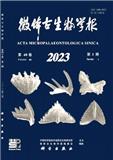
微体古生物学报
北核,CSCD,科核,高T2
CN中文-季刊影响因子0.718
-
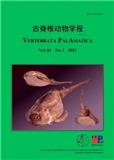
古脊椎动物学报(中英文)
北核,CSCD,科核,高T1
CN中文-季刊影响因子0.7
-

植物科学学报(原:武汉植物学研究)
北核,CSCD,科核,武A-
CN中文-双月刊影响因子1.589
-
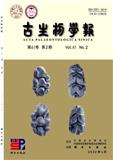
古生物学报
北核,CSCD,科核,高T1,武B+
CN中文-季刊影响因子0.83
-
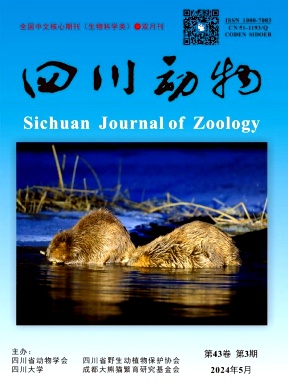
四川动物
北核,科核
CN中文-双月刊影响因子1.24
-
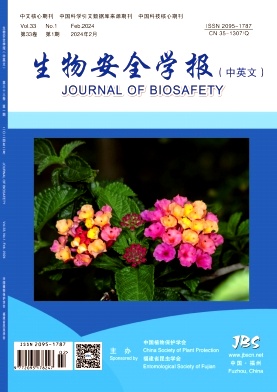
生物安全学报(中英文)(原:华东昆虫学报)
北核,科核,CSCD扩
CN中文-季刊影响因子1.247
-
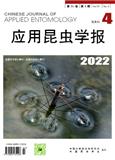
应用昆虫学报(原:昆虫知识)
北核,CSCD,科核,武A
CN中文-双月刊影响因子1.836
-
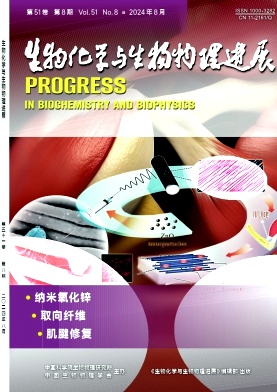
生物化学与生物物理进展
北核,CSCD,科核,武A-
CN中文-月刊影响因子1.167
常见问题
-
基因组蛋白质组与生物信息学报杂志社官网、联系方式是什么?
基因组蛋白质组与生物信息学报杂志社官网:http://gpb.big.ac.cn/
投稿网址:https://www.editorialmanager.com/gpb联系电话:010-84097425(202304期)
投稿邮箱:editor@big.ac.cn(202304期) -
基因组蛋白质组与生物信息学报杂志是核心期刊么?
基因组蛋白质组与生物信息学报是核心期刊,级别是:CSCD,科核, 是:生物科学分类下的知网目次,维普目次收录的期刊。
-
请问你们是基因组蛋白质组与生物信息学报杂志社吗?
我们不是《基因组蛋白质组与生物信息学报》杂志社。本站主要从事期刊信息展示与期刊推荐,不是任何杂志官网,直投稿件请联系杂志社。本站仅提供免费的学术指导、论文辅导、期刊投稿信息整理收集服务。
-
你们指导服务后可以保证文章被发表吗?
期刊发表的成功与否,主要取决于文章内容的质量。编辑老师会根据研究领域、创新性等多因素进行考量。我们会帮助您理解期刊的发表要求,助力提升发表几率,从而增加发表的机会。
-
晋级论文能否在报纸上发表?
在学术界,论文的发表往往被视为研究者职业发展的重要一环。晋级论文,即为了获得更高职称或学术地位而撰写的学术论文,通常需在专业期刊上发表。然而,许多人可能会问
